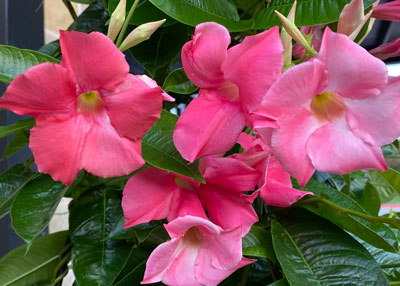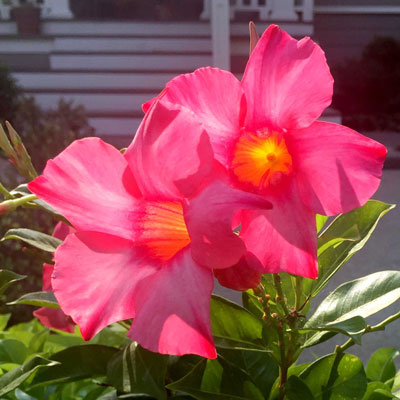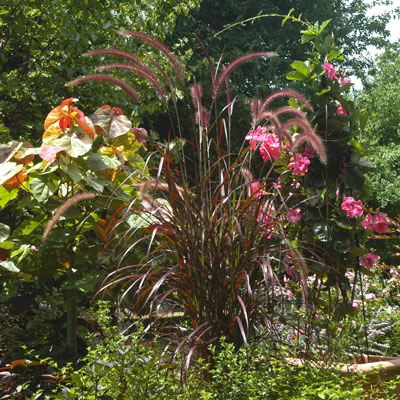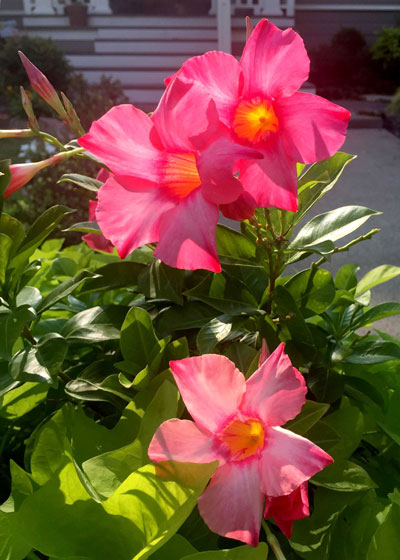Marvelous Mandevillas

You gotta love a tropical vine that thrives in the Texas summertime. Mandevillas do just that. And they’re mannerly. Compact growth. No thorns. No major pest problems (except mealy bugs when we try to over-winter them in the greenhouse). Continuous blooms. What’s not to like about a plant like that!

I’ve never had the courage to plant a mandevilla directly into the ground. I’m not sure exactly why that’s the case, because I found long ago that it’s a lot easier just to start with a new plant every spring than it is to nurse one through a cold Texas winter in my greenhouse, or heaven help me, in the house.
This plant needs heat, and it has to have sunlight. I have sunlight in my greenhouse, and we have heat in the house (except last February!), but I can’t afford to keep the greenhouse warm enough to keep the mandevilla vigorous. It’s just easier to start anew early each summer.

Vines climb in different ways. Some stick to their supports. Others have tendrils. Still others, mandevillas included, encircle whatever is nearby and climb in the process. Wrought iron frames are ideal, but you can also use wires or fine cables to help them climb wooden fences.
Like most tropical plants, mandevillas do best in loose, highly organic potting soils. I mix my own using 50 percent sphagnum peat moss, 30 percent finely ground pine bark mulch and 10 percent each horticultural grade perlite and expanded shale. I use water-soluble, high-nitrogen fertilizer almost every time that I water.

In those 30 or 35 years that mandevillas have been in mainstream Texas horticulture, breeders have been working to select a nice assortment of shades of rose, pink and white. I hope this inspires you to head out to a nursery this weekend to grab one for your gardens. You’ll be glad that you did.
